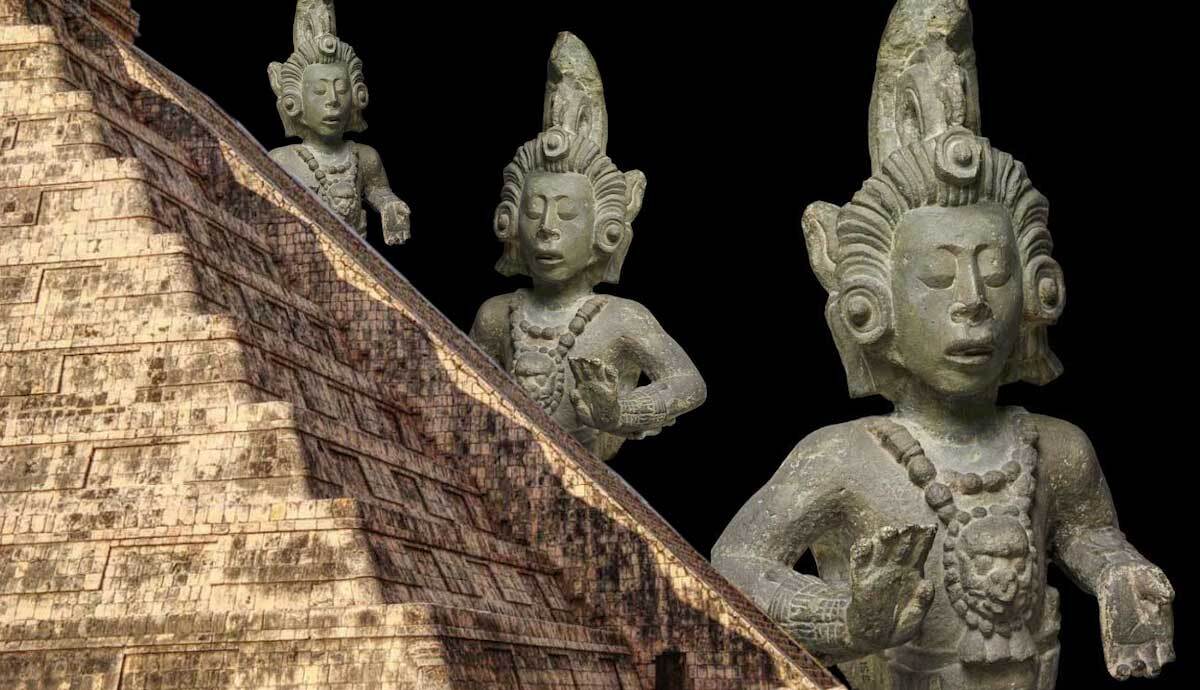
Maya religion is a rich tapestry of beliefs, rituals, and deities that shaped the lives of the ancient Maya civilization. Rooted in nature, astronomy, and the cycles of time, their spiritual practices offer a glimpse into a world where gods and humans coexisted. Did you know the Maya believed in a complex pantheon of gods, each associated with natural elements like the sun, rain, and maize? They also practiced intricate rituals, including bloodletting and human sacrifice, to appease these deities. Maya religion wasn't just about worship; it influenced their architecture, art, and even their calendar system. Dive into these 25 fascinating facts to understand how deeply spirituality was woven into the fabric of Maya life.
Ancient Roots of Maya Religion
The Maya civilization, known for its advanced writing, art, and architecture, also had a rich and complex religious system. Here are some fascinating facts about Maya religion that highlight its depth and intricacy.
-
The Maya religion is polytheistic, meaning they worship multiple gods and goddesses, each associated with different aspects of life and nature.
-
The primary deity in Maya religion is Itzamna, the god of creation, wisdom, and the sky. He is often depicted as an old man with a toothless mouth.
-
Chaac, the rain god, is another significant figure. The Maya believed he controlled rain and storms, essential for their agriculture.
-
The Maya also worshipped a maize god, known as Hun Hunahpu, symbolizing the importance of corn in their diet and culture.
-
Ix Chel, the goddess of the moon, love, fertility, and medicine, played a crucial role in Maya mythology and daily life.
Rituals and Ceremonies
Rituals and ceremonies were integral to Maya religion, often involving elaborate practices to honor their deities and seek their favor.
-
Bloodletting was a common ritual, where nobles would pierce their bodies to offer blood to the gods, believed to be a powerful sacrifice.
-
Human sacrifice, though less common, was practiced during significant events or crises, such as droughts or wars, to appease the gods.
-
The Maya performed elaborate ceremonies during the solar and lunar eclipses, viewing these events as significant omens.
-
Ball games, known as Pok-A-Tok, had religious significance. The games were often played to resolve conflicts or as part of ritual ceremonies.
-
The Maya used hallucinogenic substances during rituals to induce visions and communicate with the spiritual world.
Sacred Spaces and Temples
The Maya built impressive structures dedicated to their gods, serving as centers for worship and ceremonies.
-
Pyramids, such as those in Tikal and Chichen Itza, were not just architectural marvels but also sacred temples for religious rituals.
-
Cenotes, natural sinkholes, were considered portals to the underworld and were used for offerings and sacrifices.
-
The city of Palenque is home to the Temple of the Inscriptions, a significant religious site containing the tomb of the ruler Pakal the Great.
-
Copan, another major Maya city, features the Hieroglyphic Stairway, which records the history and religious beliefs of the Maya.
-
The Maya believed that caves were entrances to Xibalba, the underworld, and conducted rituals within them.
Cosmology and Beliefs
Maya cosmology is intricate, with a detailed understanding of the universe and the afterlife.
-
The Maya believed in a multi-layered universe, consisting of the heavens, the earthly realm, and the underworld, Xibalba.
-
They thought the world was flat and square, supported by four gods at each corner, known as Bacabs.
-
The Maya calendar system, including the Tzolk'in and Haab', was deeply intertwined with their religious beliefs and rituals.
-
They believed in cycles of creation and destruction, with the current world being the fifth creation.
-
The Maya thought that after death, souls would travel to the underworld, where they faced trials before reaching paradise.
Influence on Modern Culture
Despite the decline of the ancient Maya civilization, their religious beliefs and practices continue to influence modern culture.
-
Many modern Maya communities still practice traditional rituals and ceremonies, blending them with Catholicism.
-
The Day of the Dead, celebrated in Mexico and Central America, has roots in ancient Maya beliefs about the afterlife.
-
Maya mythology and deities appear in contemporary literature, films, and video games, keeping their stories alive.
-
Archaeological discoveries continue to reveal new insights into Maya religion, sparking interest and admiration worldwide.
-
The Maya calendar, particularly the Long Count, gained global attention in 2012, with many interpreting it as predicting the end of the world.
Final Thoughts on Maya Religion
Maya religion is a fascinating blend of mythology, astronomy, and ritual. Their gods, like Kukulkan and Chaac, played crucial roles in daily life and cosmic events. Temples and pyramids, such as those at Chichen Itza and Tikal, stand as testaments to their architectural genius and spiritual devotion. The Maya calendar, with its intricate cycles, showcases their advanced understanding of time. Rituals, often involving offerings and sometimes bloodletting, were central to maintaining cosmic balance. Despite the Spanish conquest, many Maya traditions persist, blending with Catholicism to create unique cultural practices. Understanding Maya religion offers a glimpse into a civilization that valued harmony between the earthly and the divine. Their legacy, rich in symbolism and tradition, continues to captivate and inspire. Dive deeper into their world, and you'll uncover layers of history, belief, and innovation that still resonate today.
Was this page helpful?
Our commitment to delivering trustworthy and engaging content is at the heart of what we do. Each fact on our site is contributed by real users like you, bringing a wealth of diverse insights and information. To ensure the highest standards of accuracy and reliability, our dedicated editors meticulously review each submission. This process guarantees that the facts we share are not only fascinating but also credible. Trust in our commitment to quality and authenticity as you explore and learn with us.


